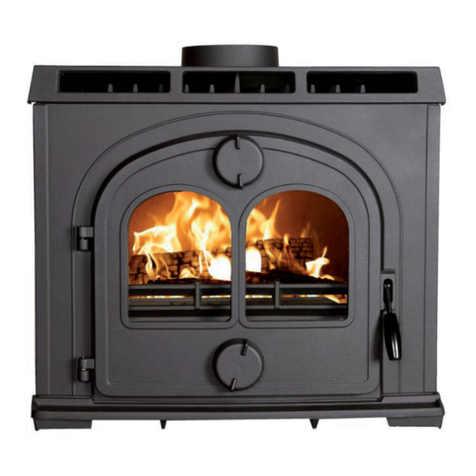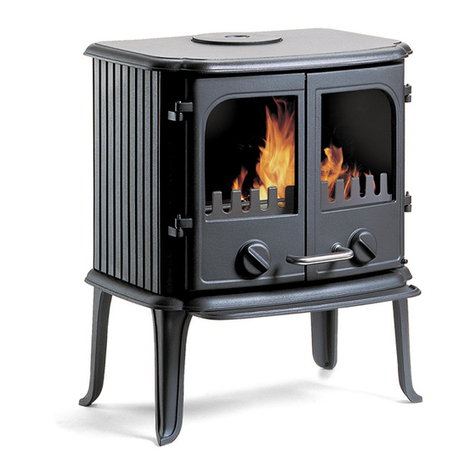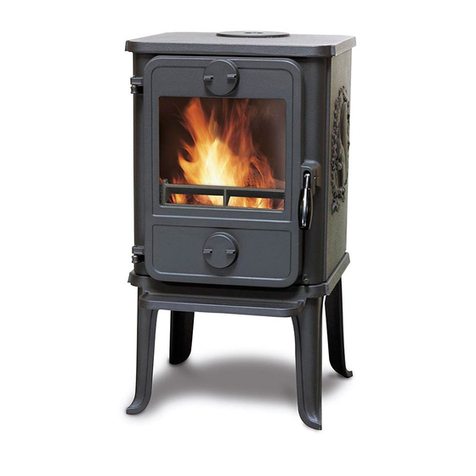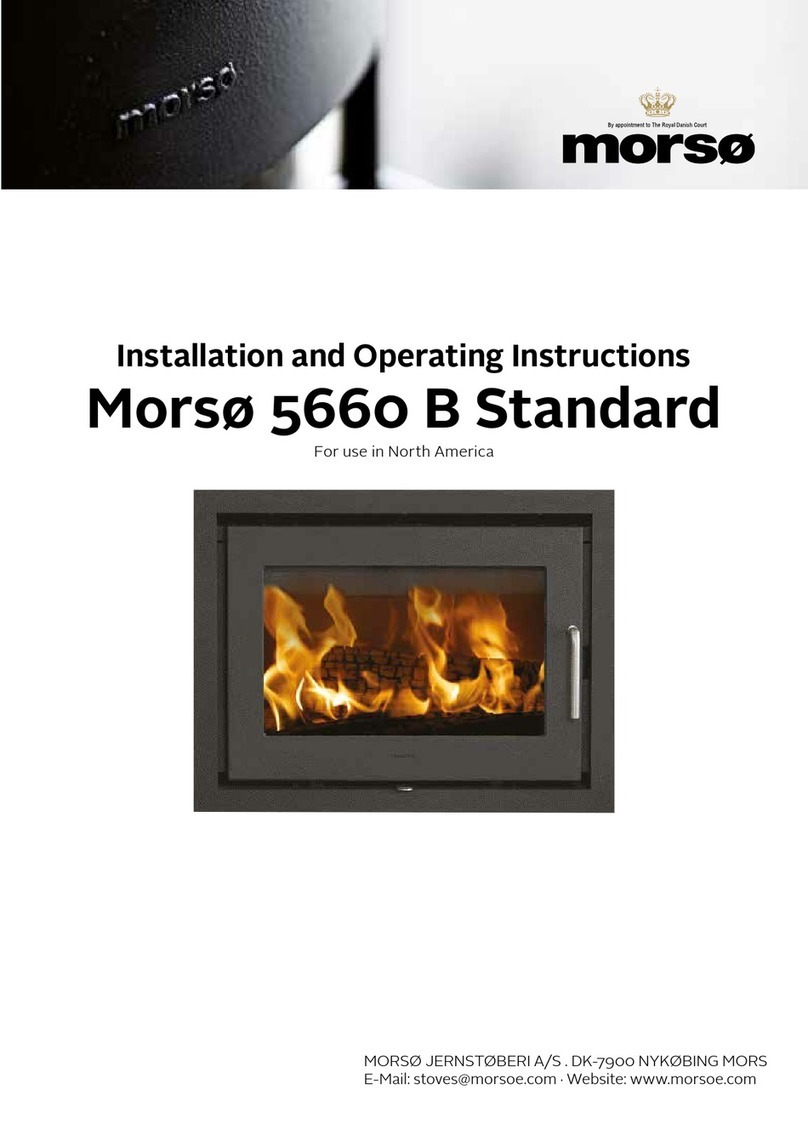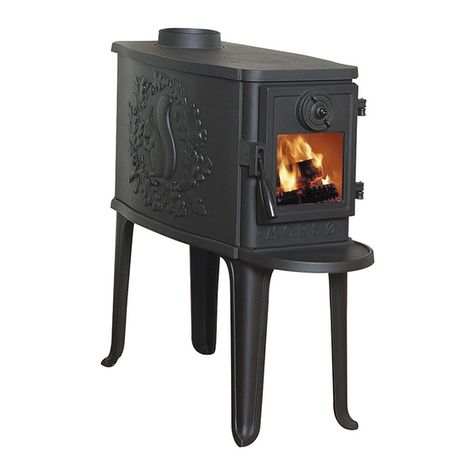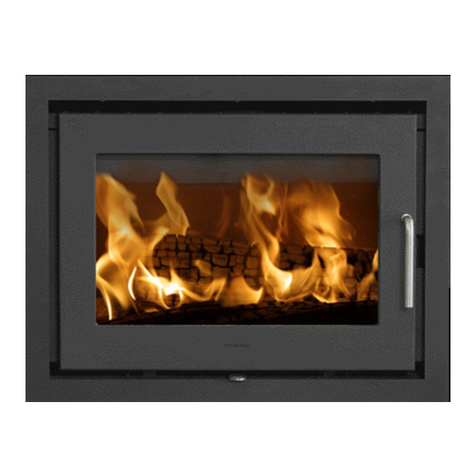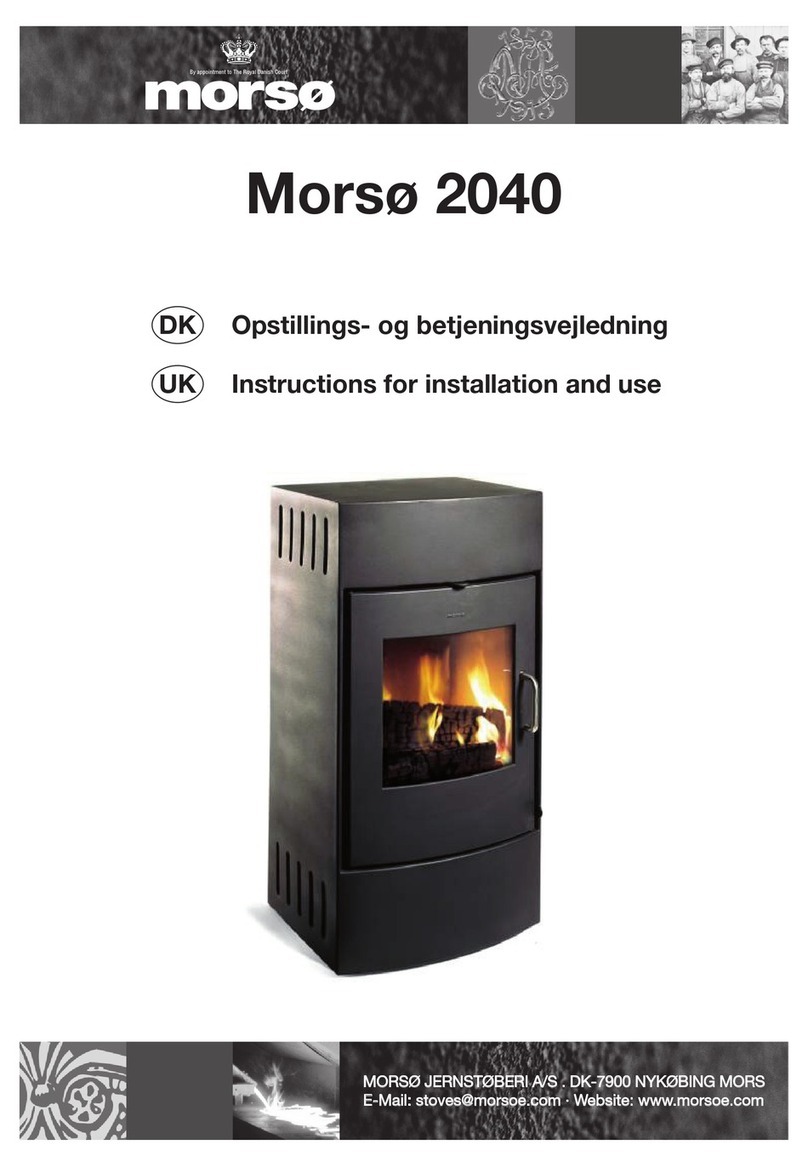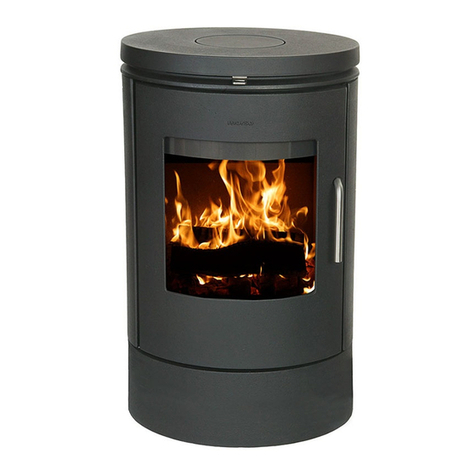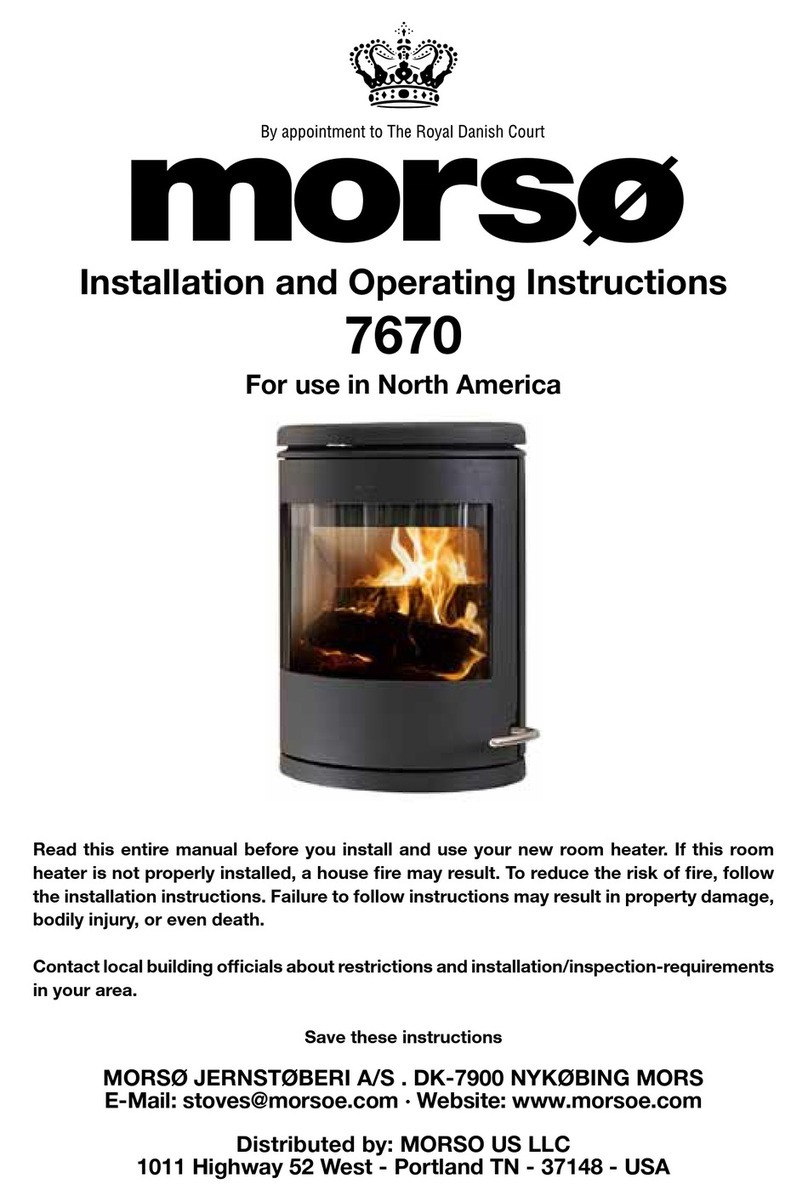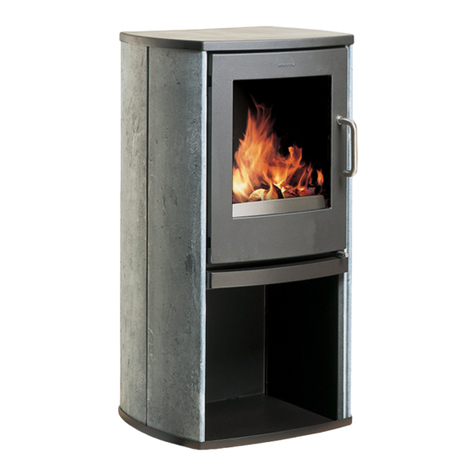
18
19
DK ENG Gasket
The gasket around the perimeter of the doors may harden over a period of time. It should be
replaced if it becomes dicult to close the doors or if air starts to leak in around the perim-
eter of the doors, causing the re to become a little less controllable. A morsø rope gasket kit
is available from your stove supplier.
3.3 Cleaning the Stove and the Flue
Check for soot above the bae plate and around the ue outlet every month or so to start
with. If the stove suddenly becomes sluggish, check for a soot fall around the ue collar or
in the ue/chimney.
The chimney and chimney connector should be inspected at least once every two months
during the heating season to determine if a creosote buildup has occurred. If creosote has
accumulated, it should be removed to reduce the risk of a chimney re.
Clean the ue/chimney - all the way from the stove to the ue terminal point above the house.
A good routine is to clean the ue after each heating season in any case, and inspect prior
to the season to ensure that bird’s nests or other blockages have not occurred during the
o season.
Ash disposal
Empty the ashpan on a daily basis or as needed. Ash allowed to build up towards the under-
side of the grate will trap heat and could cause premature failure of the grate.
Empty the ashpan according to this procedure:
Open the front door, and use a shovel or poker to stir excess ash through the ash slots in
the grate down into the ash pan. Then, open the ash door and take out the ash pan, making
sure to keep it level to avoid spilling ash.
Dispose the ash in a metal container with a tight tting lid.
The closed container of ashes should be placed on a noncombustible oor or on the ground,
well away from all combustible materials, pending nal disposal. If the ashes are disposed of
by burial in soil or otherwise locally disperded, they should be retained in the closed container
until all cinders have thoroughly cooled.
Return the ash pan to its original position in the stove, and close the ash door.
Caution:
Never empty a stove in operation.
Never use your household or shop vacuum cleaner to remove ash from the stove; always
remove and dispose of the ash properly.
Creosote - formation and need for removal
When wood is burned slowly, it produces tar and other organic vapors, which combine with ex-
pelled moisture to form creosote. The creosote vapors condense in the relatively cool chimney
ue of a slow-burning re. As a result, creosote residue accumulates on the ue lining. When
ignited this creosote makes an extremely hot re. When burning wood, the chimney and chimney
connector should be inspected at least once every two months during the heating season to de-
termine if a creosote buildup has occurred. If creosote has accumulated, it should be removed to
reduce the risk of a chimney re.
Chimney sweeping
Inspect the system regularly during the heating season as part of a regular maintenance sched-
ule. To inspect the chimney, let the stove cool completely. Then, using a mirror, sight up through
the ue collar into the chimney ue. If you cannot inspect the ue system in this fashion, the
stove must be disconnected to provide better viewing access.
Clean the chimney using a brush the same size and shape as the ue liner. Run the brush up
and down the liner, causing any deposits to fall to the bottom of the chimney where they
can be removed through the clean-out door.
Clean the chimney connector disconnecting the sections, taking them outside, and remov-
ing any deposits with a sti wire brush. Reinstall the connector sections after cleaning, be-
ing sure to secure the joints between individual sections with sheet metal screws.
If you cannot inspect or clean the chimney yourself, contact your local Morsø Dealer or a
professional chimney sweep.
If you do experience a chimney re, act promptly and:
1. Close the air control.
2. Get everyone out of the house.
3. Call the Fire Department.
Annual maintenance
Before the heating season, perform a thorough cleaning, inspection and repair:
Thoroughly clean the chimney and chimney connector.
Inspect the chimney for damage and deterioration. Replace weak sections of prefabricated
chimney. Have a mason make repairs to a masonry chimney.
Inspect the chimney connector and replace any damaged sections.
Check gasketing for wear or compression, and replace if necessary.
Check the glass for cracking; replace if needed.
Check door and handles for tightness. Adjust if needed.
ALWAYS USE ORIGINAL MORSØ SPAREPARTS
3.4 Leaving the stove for extended periods
Important:
If the stove is to be left unused for any period of time, clean it out thoroughly and leave the
air control slightly open to allow airow. Make sure that the ue does not allow rainwater
to come anywhere near the stove; install a chimney cap, but do not block o the ue com-
pletely.
These measures should ensure there is a slight movement of air through the stove, and that
the body of the stove remains dry, right into the corners.
Any ash left within an unred stove can attract moisture like blotting paper. If moisture is al-
lowed to settle within the stove, rust will form. Rust expands as it takes a grip. This can lead
to undue pressure on the stove joints, and this in turn may result in damage to the stove.
NOTE: It is best to thoroughly clean the stove after the heating season has concluded.
Adding a dessicant, such as kitter litter, into the ash pan helps absorb moisture during
the summer months. Be sure to remove this prior to the heating season.
Thank you for buying a morsø stove.
We hope you have many years of carefree warmth in its company. Some initial experimen-
tation with loading and running techniques will decide your normal routine. If you have any
problems after this short learning phase, please refer to your stove dealer. Should they be
unable to help for any reason, please contact us in writing at the address on the front of
this publication.

